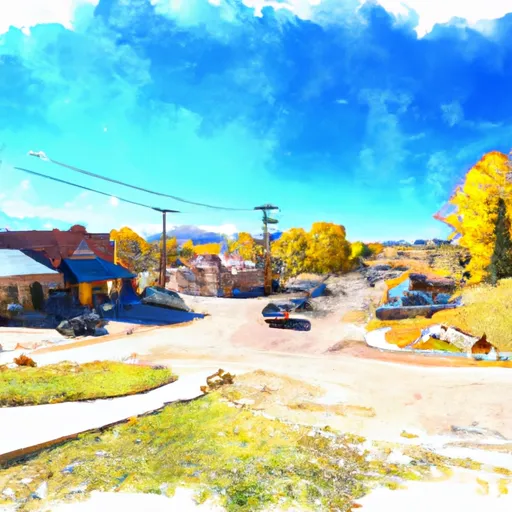-
 Snoflo Premium
Snoflo Premium
Get unlimited access to all our content
With no Ad interruptions! - Start Your Free Trial Login with existing account
Bond
Eden Index
Climate
6.4
•
Recreation
4.3
•
Community
•
Safeguard
4.0/10

Bond is a small community located in Eagle County, Colorado, at an elevation of 7,420 feet. The climate in Bond is characterized by cold winters and mild summers, with an average annual precipitation of 15 inches. The area is known for its hydrology constituents, including the Colorado River, which runs through the region, and the Gore Creek, a popular destination for fly fishing enthusiasts. Outdoor recreation opportunities in Bond include hiking, biking, fishing, and camping. The area is home to several scenic trails, including the Gore Range Trail and the Piney Lake Trail. Additionally, visitors can enjoy horseback riding, rock climbing, and white-water rafting on the nearby rivers. Overall, Bond is a great place for outdoor enthusiasts to explore and enjoy the natural beauty of Colorado.
What is the Eden Index?
The Snoflo Eden Index serves as a comprehensive rating system for regions, evaluating their desirability through a holistic assessment of climate health, outdoor recreation opportunities, and natural disaster risk, acknowledging the profound impact of these factors on livability and well-being.
Climate Health Indicator (CHI): 6.4
Bond receives approximately
678mm of rain per year,
with humidity levels near 56%
and air temperatures averaging around
3°C.
Bond has a plant hardyness factor of
5, meaning
plants and agriculture in this region thrive during a short period during spring and early summer. Most
plants will die off during the colder winter months.
By considering the ideal temperature range, reliable water supplies, clean air, and stable seasonal rain or snowpacks, the Climate Health Indicator (CHI) underscores the significance of a healthy climate as the foundation for quality living.
A healthy climate is paramount for ensuring a high quality of life and livability in a region, fostering both physical well-being and environmental harmony. This can be characterized by ideal temperatures, reliable access to water supplies, clean air, and consistent seasonal rain or snowpacks.
Weather Forecast
Streamflow Conditions
Colorado Headwaters
Area Rivers
Colorado Headwaters
Snowpack Depths
Colorado Headwaters
Reservoir Storage Capacity
Colorado Headwaters
Groundwater Levels
Recreational Opportunity Index (ROI): 4.3
The Recreational Opportunity Index (ROI) recognizes the value of outdoor recreational options, such as parks, hiking trails, camping sites, and fishing spots, while acknowledging that climate plays a pivotal role in ensuring the comfort and consistency of these experiences.
Access to outdoor recreational opportunities, encompassing activities such as parks, hiking, camping, and fishing, is crucial for overall well-being, and the climate plays a pivotal role in enabling and enhancing these experiences, ensuring that individuals can engage in nature-based activities comfortably and consistently.
Camping Areas
| Campground | Campsites | Reservations | Toilets | Showers | Elevation |
|---|---|---|---|---|---|
| Mayqueen | 27 | 9,884 ft | |||
| Halfmoon East | 6 | 9,923 ft | |||
| Difficult | 47 | 8,139 ft | |||
| Lincoln Gulch | 7 | 9,606 ft | |||
| Elbert Creek | 17 | 10,095 ft | |||
| Weller | 11 | 9,393 ft | |||
| Halfmoon West | 16 | 9,932 ft | |||
| Tabor | 44 | 9,897 ft | |||
| Lost Man | 10 | 10,513 ft | |||
| Matchless | 17 | 9,903 ft |
Nearby Ski Areas
Catastrophe Safeguard Index (CSI):
The Catastrophe Safeguard Index (CSI) recognizes that natural disaster risk, encompassing floods, fires, hurricanes, and tornadoes, can drastically affect safety and the overall appeal of an area.
The level of natural disaster risk in a region significantly affects safety and the overall livability, with climate change amplifying these risks by potentially increasing the frequency and intensity of events like floods, fires, hurricanes, and tornadoes, thereby posing substantial challenges to community resilience and well-being.
Community Resilience Indicator (CRI):
The Community Resilience Indicator (CRI) recognizes that education, healthcare, and socioeconomics are crucial to the well-being of a region. The CRI acknowledges the profound impact of these elements on residents' overall quality of life. By evaluating educational resources, healthcare accessibility, and economic inclusivity, the index captures the essential aspects that contribute to a thriving community, fostering resident satisfaction, equity, and social cohesion.

